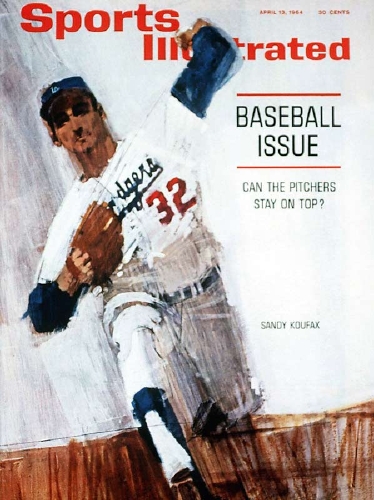Walt Reed, author of “The Illustrator in America” said that “his pictures are probably more admired – and more imitated – than those of any other current illustrator.”
Bernie Fuchs ( 1932-2009 ) created magazine illustrations and advertisements with a unique vibrant style that captured and defined middle class life in America from the post-war until the late 60′s. He is responsible for establishing a stylistic standard for editorial and advertising art that accented the sophisticated and romantic, and established an aspiration level for those in search of a middle class way of life and a certain savoie-vive associated with this affluence. His work were devoid of the sentimentality and seductive romanticism of Norman Rockwell, but used the same powerful imagery of illustration, but in the form of modern art abstraction. Fuch’s work is characterized by textural effects and narrative compositions which contained a certain movement and melody enhanced by a mastery curvy flowing lines and angles.
”Oliver and the Rich Girl was an important statement in its day, something that Bernie, the art director and the magazine were particularly proud of because it really opened up the page, integrating the illustration, typography and text in a way that had not really been done before. The text became part of the design, the illustration was no longer confined to a rectangular box, and white space ran riot over the whole spread (in a huge, oversized magazine). Back then, it heralded a fundamental reordering of priorities for women’s magazine illustration.”( David Apatoff )
Fuch’s signature style was a form of logo that was heavily copied by others, since the style was accessible and reades became highly committed to the genre’s lack of controversy. His ”golden age ” of illustration has been supplanted by digital art and photoshop, yet the depth and artistic integrity has been partially lost in the transition.
While Fuch’s work shows the control and realism of Rockwell, it also has several more dynamic features taken from avant-garde techniques: the vigorous brush strokes; use of tilted horizon that heightens a sense of drama; use of object distortion and the placement of the figurative within the composition which borrows from the abstract and impressionistic styles.
Fuchs incorporated a progressive sense of design, flow and pattern into his compositions. those overlapping figures provided an interesting well connected flow to his strong compositions. Fuchs influenced many illustrators to overlap their figures in novel and well designed ways.
”At the same time, another painter– Bernie Fuchs– dealt with the exact same aesthetic problems in a different forum. Like Motherwell, Rauschenberg and Kline, Fuchs rejected the realistic painting of his predecessors (such as Norman Rockwell) and focused on broader qualities of abstract design and composition.
If we compare Fuchs’ art with the work of the other three painters, applying the same standards, it is difficult to tell which painter is superior. Fuchs’ compositions were equally bold and lovely. The colors and shapes were comparable. In fact, the only consistent difference between Fuchs and the three “fine” artists was the purpose for which the art was created. Motherwell, Rauschenberg and Kline created art for art’s sake. Fuchs’ art had a commercial function. He created art for a client’s sake, for he is an illustrator.”( David Apatoff )







 COMMENTS
COMMENTS



